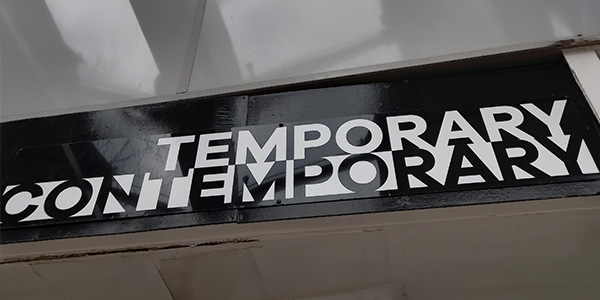Huddersfield Contemporary Music Festival; The Current Climate
PhD student Chantal Berry writes about her experiences at the Huddersfield Contemporary Music Festival and how they have inspired her current research.

I first heard about the Festival in October 2017 whilst a fresh-faced music undergraduate in Leeds. ‘Huddersfield is a must’ my lecturer advised, as he handed out the first-term's assignment for Composition module, level one. The first six weeks of the course had introduced me to the electronic sound worlds of Iannis Xenakis and Pierre Schaeffer, and the acoustic worlds of Peter Maxwell Davies, Jennifer Walshe and Liza Lim, which had been an ear-opening experience. Prior to this point, Dimitri Shostakovich and Igor Stravinsky had been the upper limits of avante-garde composition to my knowledge, which in comparison to Xenakis and the others now seemed relatively Bach-esque.
The assignment for the first term of the academic year 2017 challenged us to write a five-minute piece for the less-than-typical ensemble of trombone, violin, double bass, electric guitar, bass guitar, glockenspiel, wood blocks and nipple-gong. Unsure what to do with this colourful collection of instruments, I wrote a less-than-convincing piece titled ‘The Camel’s Hump’, featuring the trombone as the protagonist in question. Had I attended the Huddersfield Contemporary Music Festival that year as advised, I might have written a rather more sophisticated five minutes of sound than I did.
November 2023, six years and one pandemic later, I finally arrived at the Huddersfield Contemporary Music Festival for the first time as a third year PhD student researching acoustic ecology. I was determined and intrigued to attend The Current Climate, a conference which explored the extensive impact of the arts and creative industries on the future of the climate. I attended two panel discussions: ‘Is Europe Greener?’ and ‘Why make art about anything else?’ which explored the role of artists in the creation of a more sustainable future, as well as how the climate inspires art. ‘Noise Fields’, a thrilling percussion and electronics concert given by Colin Frank showcased how musical interpretations are inspired by and inspire new ways of relating to changing environments, based upon pervading noise in the soundscape. And finally, an installation tour of ‘The Calder in your Bones’ by David Vélez, used industrial duct, fur and electroacoustic bone transducers to explore the sounds and well-being of the River Calder and those who interact with it.
I was also very excited to attend the UK premier of Liza Lim’s piece ‘Multispecies Knots of Ethical Time’ and hear her discuss the work with music critic Tim Rutherford-Johnson. Lim’s work had first attracted my attention during my undergraduate studies, and has continued to inspire my research during the PhD. Lim discussed how the tactility of materials has inspired how she thinks about the relationship, or ecology, between instruments and their environments; in the case of ‘Multispecies Knots of Ethical Time’, how the river interacts and literally plays the violin strings. Lim discussed the personhood of the environment, drawing on Aboriginal tradition to inspire how she approaches the environment as a living being, deserving of respect and identity, thinking of herself as part of a shared ecology, physically yet intangibly, the complexities of which Lim captured beautifully and intricately. The role of the river as an interface and part of the ecology of the piece, between composer and instrument, was incredibly impactful, and holds a timeless quality which I think emanates into environmental thinking of the past and crucially, the present and the future.
The experience of these events combined allowed me to engage with some of the most important ecological debates of our time, whilst enjoying the highest quality of contemporary music in the world. The depth of discussion and quality of art reflected the level of compassion for environments which in many cases were integral to the production, inspiration and existence of the work presented at the Festival. It was clear how intertwined contemporary music is within ecological sustainability and how important art and artists are at the table of ecological policy-making.
Attending the Festival inspired me to approach historical documents, my main source of information for my PhD research about historical rural soundscapes, in a way which considers written documents as part of a wider ecological history, not only of the seen but also of the felt and the unseen.
The aforementioned first-attempt undergraduate composition has since been significantly revised, and now exists as a humble testament to the inspiration generated by the artists at Huddersfield Contemporary Music Festival 2023.